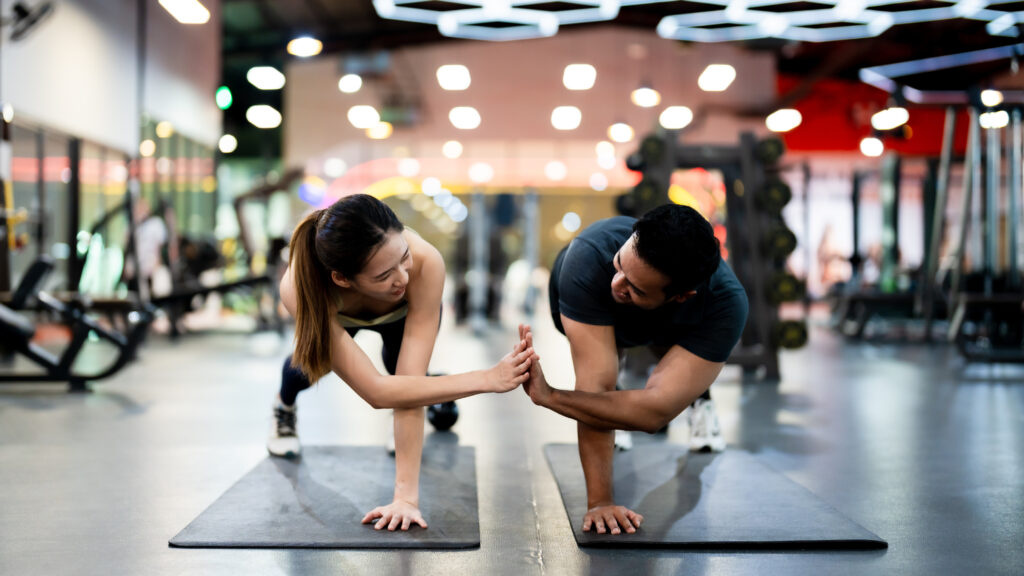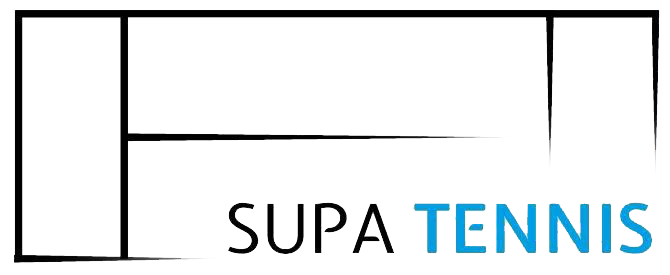A Comprehensive Introduction to Tennis Training
Improving your tennis game requires more than just hitting balls on the court. It takes a comprehensive approach that encompasses dedication, consistent practice, and guidance from knowledgeable tennis coaches. However, taking your game to the next level involves more than just on-court training.
The world’s top tennis players maintain a balanced, healthy lifestyle where every choice they make, from their diet and sleep habits to their workout routines, is centred around optimizing their performance on the tennis court. While you don’t need to become as obsessed as the pros, you can still learn from their approach and apply it to your own off-court tennis training.
Whether your goal is to earn a college scholarship, move up a USTA division, or simply become more competitive in your weekly doubles or singles tennis matches, your off-court regimen can be just as important as the work you put in on the court. We’ve outlined the key areas of off-court tennis training that can help take your tennis game to new heights.
Diet: What Do Tennis Players Eat?
It’s undeniable that your tennis training is the most important part of improving your game. However, how you fuel your body to perform at its highest potential on the court is equally crucial. As the saying goes, “You wouldn’t put regular gasoline in your Ferrari. Why would you fuel your body with less than the best foods?”

Here are some simple diet tips to get your body in top tennis shape:
Don’t skip breakfast! Many people make the mistake of skipping this crucial meal. Especially if you’re serious about athletic performance. Your blood sugar is already low when you wake up, so start the day with a carb-heavy breakfast like a bagel or toast to provide early energy. If you’re not used to eating in the morning, start small with a glass of juice or yogurt. You’ll be amazed at how much more ready your body feels for exercise.
Hydrate constantly. Hydrating before, during and after a match is critical, but the key is to stay hydrated all day long. If you can get in the habit of drinking water consistently, you won’t need to think about hydrating for a tennis match – your body will already be primed and ready to perform.
Boost your immune system. Eating a colourful, antioxidant-rich diet with plenty of fruits, vegetables, nuts and probiotics will strengthen both your body and your immune system. This will help you recover faster and stay healthy.
Plan ahead. Grocery shopping and meal prepping for the week ahead makes it much easier to stick to a nutritious diet. You’ll save time, money and avoid the temptation of unhealthy last-minute options.
Snack smart. Keep healthy options like smoothies, nuts and trail mix on hand for satisfying between-meal cravings.
Focus on recovery. After intense training, be sure to refuel with a mix of protein and carbs within 30 minutes. This will help repair muscles and replenish energy stores.
By following these diet tips, tennis players can ensure their bodies are properly fuelled to perform at their peak on the court.
Staying Fit: The Fitness Secrets of Professional Tennis Players
Achieving peak tennis fitness requires training that extends well beyond the court. Serious players must focus on comprehensive fitness, not just swing mechanics and footwork, to prepare their bodies for optimal performance. Here are the key elements of staying fit as a tennis player.
Flexibility is vital for tennis players. Incorporating both static and dynamic stretches into your pre-and post-workout routines can help you improve performance and reduce the risk of injury.
Static stretches, where you hold a position to lengthen muscles, are important. But dynamic stretches that move your body through a range of motion are especially crucial for sports like tennis. The dynamic, high-impact nature of the game requires properly warmed-up muscles to avoid strains or tears.
By taking the time to thoroughly stretch before and after playing or taking lessons, you’ll see faster improvements in your tennis skills. Dynamic stretches in particular will prepare your major muscle groups for the demands of the sport, decreasing your chances of getting sidelined by an injury.
Overall, this revision delivers a more compelling, informative, and actionable message for tennis players about the role of flexibility in their training and play.
Flexibility is crucial for tennis players. Incorporating regular stretching before and after playing or taking lessons can help you improve your game and reduce your risk of injury. It’s important to understand the difference between static and dynamic stretches.
Static stretches involve holding a position to lengthen the muscles, while dynamic stretches move the body through a range of motion. Dynamic stretches are especially beneficial for sports like tennis, where you’re constantly moving, jumping, and putting high impact on your major muscle groups. To properly warm up for tennis, focus on dynamic stretches.
Here’s a dynamic stretch routine to try before hitting the court:
1. Jog lightly around tennis court for 4 laps to get your body moving.
2. Standing in place, kick your heels to your butt, alternating legs.
3. Take a large step to the side with one foot, sinking into a quarter lunge. Repeat on the other side.
4. High skip across the court, bringing your knees up as high as possible.
5. Lunge across the court, making sure to sink your back leg.
6. Hold a racket at the top and bottom, twisting your torso side to side for 30 seconds.
7. Wiggle your arms and legs as if you’re made of jelly for 30 seconds.
In addition to tennis, incorporating 2 weight training sessions per week can help develop full-body strength and support your tennis performance. Focus on exercises for your shoulders, core, and lower body.
Weight Training for Tennis Players
Tennis is an excellent form of exercise, but it primarily works a specific set of muscles. To achieve a well-rounded fitness routine and improve your tennis performance, it’s important to incorporate weight training as well.
While playing tennis can feel like you’re “working your butt off,” it targets a limited muscle group. To build overall strength and power, you should aim to hit the gym 2-3 times per week on your non-tennis days. The following weight training regime can help develop the key muscle groups used in tennis:
Shoulders: Shoulder presses, lateral raises, rotator cuff exercises (horizontal external rotations, external rotations while lying on side, internal rotations)
Arms: Bicep curls, tricep extensions, wrist curls and extensions, grip exercises
Core: Crunches, superman exercises, standing Russian twists
Lower Body: Squats, leg press, knee extensions, hamstring curls
By adding this comprehensive weight training program to your weekly routine, you can build strength, power, and endurance – all of which will translate to better performance on the tennis court.

Agility is Essential for Tennis Players
Strength alone is not enough for tennis success. Players also need speed, coordination, and quick reaction times to truly excel. No matter how many tennis lessons you take, if you don’t regularly work on agility drills, you’ll struggle to improve your game. The following are core agility exercises that all tennis players should incorporate into their training.
Hop Scotch: Lay a flat tennis ladder along the baseline. Start at the bottom and jump into the first box with your left foot, the second with both feet, and the third with your right foot. Repeat this pattern up the ladder. For an advanced version, toss a tennis ball in your left hand for one round, your right hand for another, then alternate between hands.
In-Out Drill: Begin at the bottom of the ladder. Step into the first box with your left foot, then immediately step in with your right. Step just outside the second box with your left, then right. Continue this in-out pattern up the ladder.
T Drill: Start seated at the centre service line. When the coach blows the whistle, quickly shuffle to the right doubles sideline, then back to the centre. The coach will then hit a volley, which you’ll return. Immediately after, shuffle to the left sideline and back to the centre for another volley. Repeat this lateral movement drill.
Ask you tennis coach to incorporate these agility exercises, tennis players can develop the speed, coordination, and reaction time needed to take their game to the next level.
To conclude
The tennis-related topics that we have just covered should help you enhance not only your skills and strokes, but also your overall health. If you’re taking tennis lessons, be sure to ask your tennis coach how you can further improve your game. With an experienced, well-paid coach, it would be a missed opportunity if they didn’t address the various aspects that can boost your tennis performance – a good coach should be able to do that.
diet fitness how to choose tennis racquet improve your tennis light or heave tennis racquet tennis coach tennis diet tennis etiquette tennis fitness tennis game tennis lessons Tennis Racquet tennis rules tennis tips tennis training

